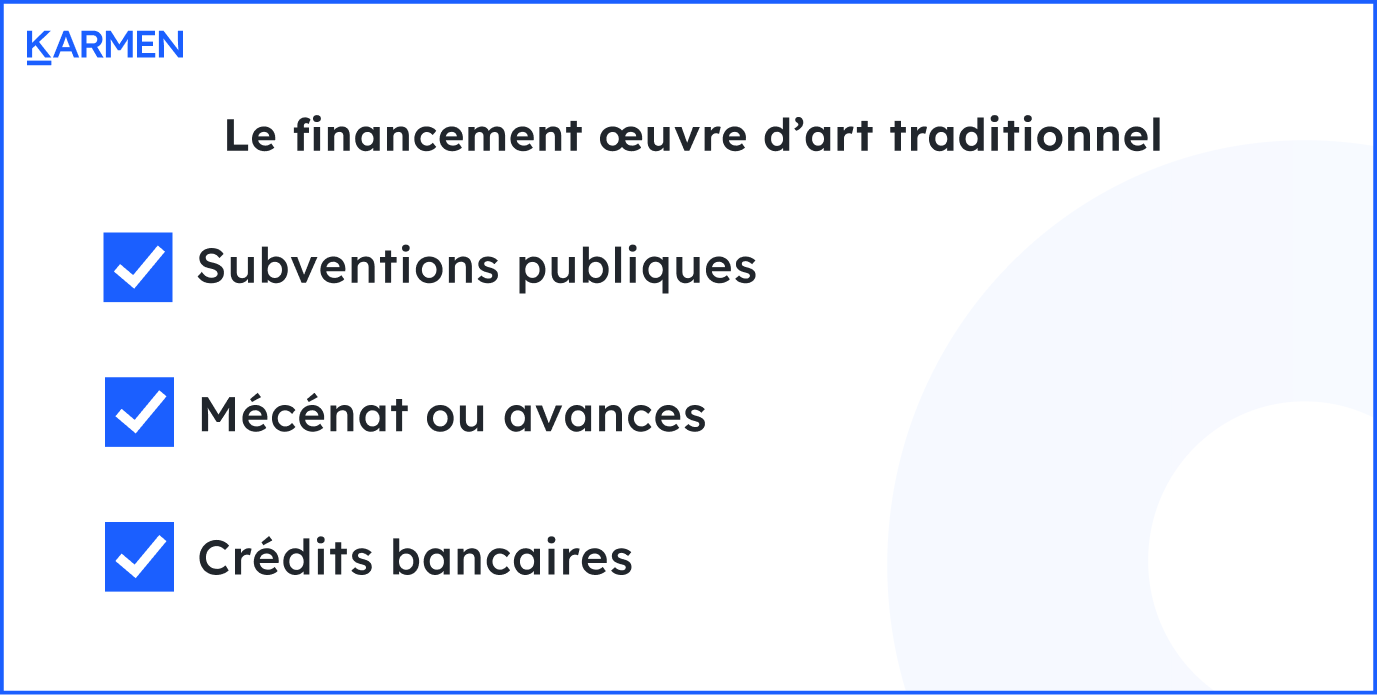17/10/2025
17/10/2025
Financing works of art: keys and solutions for success

Successfully managing the financing of works of art now calls for real expertise in finance, and careful anticipation of funding requirements. Whether the objective is to create a company dedicated to art, acquire major works of art or manage an operating cycle that is difficult to predict, each player must integrate the notions of profitability and working capital requirements right from the conception of their business plan. The company's cash flow issues and the availability of liquidity are crucial, since every art project frequently involves a time lag between immediate disbursements (production, purchases, communication) and delayed receipts (sales made, subsidies paid on time).
At each stage, the choice between self-financing, equity contribution, borrowing or applying for a discount to accelerate the collection of receivables can be decisive. All art projects require you to adjust your forecasts, analyze your income statement and evaluate your cash flow plan. Cultural enterprises, galleries or artists' collectives need to know how to structure their medium-term financing requirements: should they opt for leasing to acquire works of art? Is it a good idea to strengthen the partners' current account or diversify sources of borrowing?
The challenges of financing works of art
Today, financing works of art calls for a wide range of skills: analysis of financial structure, monitoring of outstanding amounts, management of liabilities and cash flow planning. The slightest slip in cash flow or collection of accounts receivable can threaten the viability of an artistic project. The volatility of the art market makes the development of a cash surplus difficult to predict, accentuating the importance of forecasts and business plans.
A number of major obstacles are consistently encountered:
- difficulty in synchronizing cash receipts and disbursements (particularly in the case of one-off productions, where the company has to advance funds)
- long, unpredictable payment terms from companies, public purchasers or sponsors, driving up working capital requirements and outstanding receivables
- limited access to traditional bank debt, especially when the works cannot be linked to tangible guarantees in the project's financial structure
ℹ️ A case in point: a young artist setting up her own business has to advance funds (materials, rentals, production) and wait several months for sales to come in. The lack of liquidity and the accumulation of outstanding debts put a strain on the company's cash flow, often forcing it to negotiate extensions or urgently find a banker who understands the sector's operating cycle. To avoid this type of stalemate, it is essential to implement rigorous management, as recommended in the complete guide to business financing.
How can we meet financing needs without undermining surplus or profitability?
Traditional and modern solutions under the microscope

For a long time, financing art was mainly a matter of :
- public subsidies or grants from local authorities recorded as equity in the structure's liabilities
- patrons, advances on sales
- traditional bank loans, often conditional on the creation of a solid cash-flow plan and demonstration of profitability
These levers are now complemented by :
- crowdfunding and participatory financing to meet short-term financing needs or boost self-financing by the community
- leasing of works, ideal for companies wishing to optimize their financial structure and tax benefits
- factoring and short-term financing solutions that accelerate the collection of trade receivables and reduce pressure on working capital requirements
ℹ️ Here's a current example: a digital gallery uses crowdfunding to raise enough money to finance the production of a limited series, thereby reducing the risk of outstanding amounts and supplier debts. Thanks to this model, which combines partial self-financing and rapid mobilization of liquidity, the gallery limits its recourse to borrowing and achieves a surplus more quickly. financing alternatives for companies adapted to the artistic sector.
Each solution requires a thorough understanding of the operating cycle: miscalculating capital requirements, drawing up an imprecise cash flow plan or failing to anticipate deadlines can compromise a project.
Best practices and points to watch out for
To avoid jeopardizing profitability and creative ambitions, we need to :
- draw up an exhaustive budget for each financing requirement: production, storage, trade payables, trade receivables, taxation
- manage cash flows using an updated forecast plan
- diversify financing between self-financing, equity, medium-term loans, discounting and short-term loans
ℹ️ An ill-prepared artists' collective had to halt an installation in a hurry due to a lack of funding at a key deadline: the absence of a cash flow plan and the forgetting of outstanding supplier debts put the whole project in difficulty.
Never neglect monitoring:
- fluctuating working capital requirements
- financial structure and level of liabilities
- shareholder current account and income statement to identify tensions at an early stage
Karmen Factor: an agile, discreet solution for your cash flow
In response to the complexities of short-term financing in the art world, we have launched Karmen Factor: an invoice-based line of credit with no assignment of receivables and no loss of control over customer relations. This service is aimed at all structures faced with working capital requirements or seeking to obtain liquidity before the actual payment of their sales.
Karmen Factor enables :
- accelerate collection, reduce outstanding receivables and finance investments without recourse to traditional bank borrowing
- smooth operating cycles and avoid cash shortages
- a reliable tool for forecasting and planning deadlines
ℹ️ An art publishing house mobilized Karmen Factor immediately after a trade show. As a result, the company financed an original project even before receiving any sales revenue, thus optimizing its cash flow and overall profitability.

New reflexes for better art financing
To successfully manage the financing of works of art:
- adopt a proactive cash management approach, updating your cash flows and financing requirements in real time
- vary your sources of financing between self-financing, equity, loans, leasing or digital solutions
- structure a business plan that proves to your banker the strength of your surplus, the control of your liabilities and the quality of your financial structure
ℹ️ Example: a company investing in contemporary art improves its visibility and surplus while optimizing the management of its accounts receivable and cash flow. This strategy is based on a combination of tools and methods derived from non-banking financing solutions which are now part of new business models.
Conclusion
Art financing is becoming more professional every day, with planning tools, short-term financing solutions, control of outstanding amounts and constant monitoring of the surplus. Thanks to Karmen Factor and a balanced strategy between self-financing, borrowing, working capital management and liquidity, every creative project can secure its growth and aim for artistic excellence.





